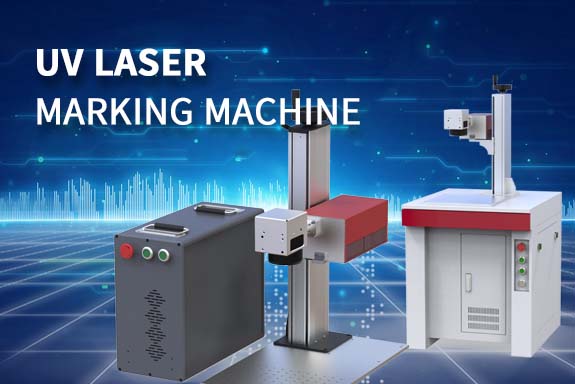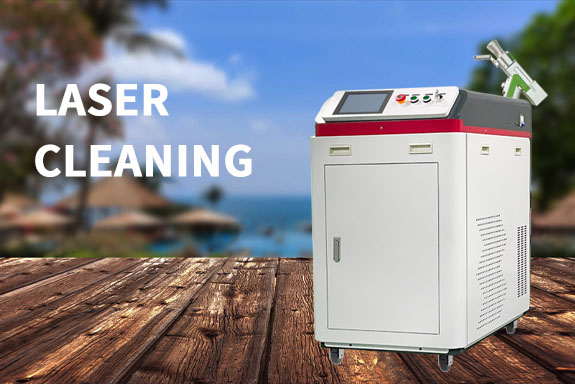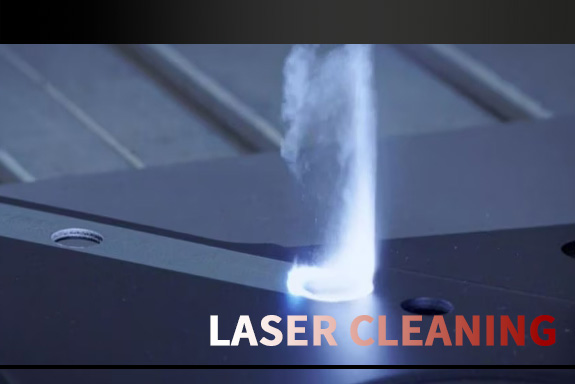Understand UV marking and its applications
What is UV marking?
UV marking is a process that uses ultraviolet (UV) light to create permanent marks on a variety of materials. The technology is popular across industries for its accuracy, speed, and versatility. One of the key tools used in UV marking is the UV laser marking machine, which plays a vital role in achieving high-quality, durable markings on different surfaces.
The role of UV laser marking machine
UV laser marking machines are devices specifically designed to emit high-energy UV light to create marks on materials. These machines use a focused UV beam to remove surface material or change its color, creating clear, precise marks. The process is contactless, which means there is no physical contact or damage to the material being marked during the marking process.

How UV laser marking machine works
The working principle of the UV laser marking machine is to use a laser source to generate a concentrated UV beam. UV light is then shined onto the surface of the material to be marked. High-energy UV rays interact with materials, causing them to undergo photochemical reactions. This reaction changes the surface properties of the material, forming a permanent mark.
Applications of UV Marking
UV marking is used across a wide range of industries for its ability to create high-contrast, durable marks on a variety of materials. Some common applications for UV marking include:
- Electronics and Semiconductor Industry: UV marking is widely used to mark components, circuit boards and semiconductor materials. The high precision and non-contact nature of UV marking make it ideal for applications in the electronics industry.
- Medical Devices and Pharmaceuticals: UV marking is critical for marking medical devices, pharmaceutical packaging, and surgical instruments. Permanent tamper-proof markings produced by UV marking machines ensure product traceability and authenticity.
- Automotive and Aerospace: UV marking is used to mark parts, components and tools in the automotive and aerospace industries. The high speed and high precision of UV marking machines make them suitable for marking a variety of materials used in these fields.
- Plastics and Packaging: UV marking is used to mark plastic products, packaging materials and containers. UV marking can create high-resolution marks on plastic surfaces, making it an important technology for the plastics and packaging industry.
- Jewellery and Personalized Items: UV marking is used to create intricate designs, logos and serial numbers on jewelry, watches and personalized items. The fine detail and permanent nature of UV markings add to the value of these products.
Advantages of UV Marking
UV marking offers several advantages over traditional marking methods, making it the first choice for many industrial applications. Some of the main advantages of UV marking include:
- High Precision: UV marking machines can produce extremely fine and detailed marks, making them suitable for applications that require high precision and accuracy.
- NON-CONTACT PROCESS: The non-contact nature of UV marking eliminates the risk of damaging the material being marked, making it ideal for delicate or sensitive surfaces.
- Permanent Marking: UV markers are fade-resistant, stain-resistant, and abrasion-resistant, ensuring the longevity of the mark even in harsh environments.
- Versatility: UV marking can be used on a variety of materials, including metals, plastics, glass, ceramics, etc., making it a versatile marking solution.
- Environmentally Friendly: UV marking is a clean and environmentally friendly process as it does not involve the use of solvents, inks or chemicals.
Challenges and Considerations
While UV marking offers many advantages, there are certain challenges and considerations that need to be kept in mind when implementing this technology. Some of these include:
- Material Compatibility: Not all materials are suitable for UV marking, and some substrates may require pre-treatment or special coating to achieve the best marking effect.
- Initial Investment: UV laser marking machines can represent a substantial initial investment, although the long-term benefits often exceed the upfront costs.
- Regulatory Compliance: Depending on the industry and application, UV marking may need to comply with specific regulations and standards, such as those related to product labeling and traceability.
- Maintenance and Calibration: UV laser marking machines require regular maintenance and calibration to ensure long-term stable and reliable performance.
Future Trend of UV Marking
As technology continues to advance, the field of UV marking is also constantly evolving to meet the changing needs of various industries. Some emerging trends in UV marking include:
- Integration with Industry 4.0: UV marking machines are being integrated with Industry 4.0 technologies such as automation, data connectivity and remote monitoring to increase efficiency and productivity.
- Enhanced Marking Speed and Resolution: Ongoing R&D efforts are focused on increasing the speed and resolution of UV marking machines, enabling faster and more detailed marking.
- Sustainable and environmentally friendly solutions: There is an increasing emphasis on developing sustainable and environmentally friendly UV marking solutions, including the use of biodegradable marking materials and energy-saving laser sources.
- Customization and Personalization: UV marking is increasingly used for customization and personalized marking applications to meet the growing demand for unique and personalized products.
In summary
UV marking driven by UV laser marking machines has become an indispensable technology in various industries, providing high-precision and permanent marking solutions for various materials. As the demand for efficient, reliable and versatile marking processes continues to grow, UV marking is expected to play an increasingly important role in meeting the changing needs of modern manufacturing and production environments. With continued advancement and innovation, UV marking will continue to be a key technology for achieving durable and high-quality marks on a variety of substrates, contributing to product traceability, brand authentication and overall quality assurance.
由投用户稿件整理稿件发布,不代表本站观点及观点,更多交流学习之用,如涉及版权等问题,请随时联系我们(yangmei@bjjcz.com),我们将在第一时间给予处理。







